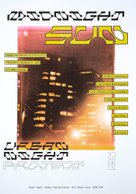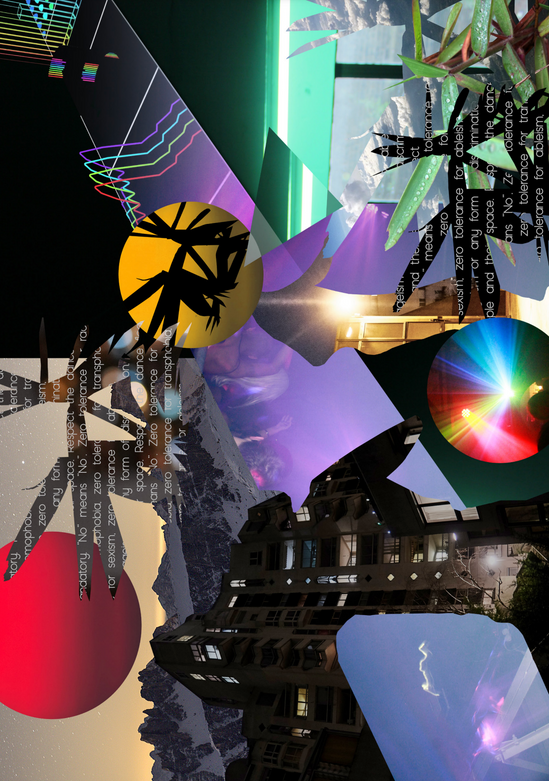COLD LIGHT AND THE QUEER NIGHT
by Lo Marshall
You know that thing? Where certain words, phrases, ideas, follow your footsteps, casting fresh light upon the connective tissue of mundane social interactions. Hil Malatino’s thinking on Trans Care, which dexterously weaves together gender, labour, care and recognition, has followed me around of late. As a genderqueer person, his words speak to me.
“Passing is a fragile art, dependent on, among many other variables, thelight. Floodlights are transphobic” Malatino contends.
In the cold light of day, under the floodlight of cis-hetero norms, I appearas a ‘cis-passing’ white, middle-class woman, which undoubtably carries privileges.
In the cold light of day, under the floodlight of cis-hetero norms, my genderqueerness is invisible, or at best, flicker at the edges of visibility.
In the cold light of day, under the floodlight of cis-hetero norms, I am tootired, too shy, too afraid to do the work of trying to make myself legible.
Gender is “a morally loaded laborious process. It is work” Maltino reminds me, and “we labour under conditions we don’t choose, conditions that many of us actively want to destroy”
For years, trying to find my place within the limits of what felt possible, queer, cis woman was how I described myself. And queer, cis womanhood can be a wonderful, generous and spacious location to reside, but it wasn’t working for me, I was working for it. As my horizons have expanded, I have re-oriented my social co-ordinates to occupy a space with more wiggle room, to borrow from Sara Ahmed. I find belonging in my genderqueerness; fucking with gender, not feeling fucked by it. I can play with contrast and manipulate the light and shade, where I used to feel quietly lost in a battle with the dark corners in restrictive boxes and binaries
I can embrace the and not the or, and embody the possibilities afforded by the agility of queer and non-binary and genderqueer and trans and femme and masc. Short hair and a long earing, lipstick and a bowtie, glossy polish and short nail, big leather boots and a skirt, tattooed arms
and a dapper shirt… I can find joy in supposably incongruous feminine and masculine signifiers that belong to no-body and every-body, even as these juxtapositions renders my body oblique in many social situations.
Recognition is not a given, it ‘comes to us in the form of a gift’, Malatino reminds us. Negotiating hypervisibility/visibilities/invisibility is a moving target and quotidian grind, for many queer and trans folks. How interdependent, how uneven and elusive, how fleeting social recognition can be.
Stepping outside my carefully assembled queer social circles means stepping into often laborious social interactions: the banal but not benign sting of misrecognition; the prickling scrutiny of a prolonged stare; the shout of ‘lesbians’ as a group of men spot me with a woman, like they’ve sighted a rare beast in the wild; being welcomed as ‘ladies’ with my wife because politeness is infused with binary gender; the blank face and internal panic that meets my ‘good morning’ as our paths cross, especially if I’m holding my wife’s hand –“look, no don’t look that’s rude, avoid eye contact. Oh, shit it spoke, what do I do? Fuck it’s too late”; the weight of hypervigilance and anticipation carried when you don’t know if or when your smooth passage across public space will be hit the friction that textures these encounters for people who move against the grain. The grind wears you down. We need spaces to recuperate, we need hope, we need each other.
In the words of Ben Walters - aka Dr Duckie, the ‘in-house bent boffin’ in queer collective Duckie – ‘even in our fucked-up world, better worlds are possible for those who have been victimised or side-lined’, queer spaces can be our ‘homemade mutant hope machines’ where we make other worlds possible. These queer other worlds are not perfect, but at their most utopian, I can feel the soft radiance of belonging, reciprocity and care, of collective pathos and joy, of shareness in similarities and solidarity across difference. I can feel the warm luminescence of that gift of recognition. At the door, at the bar, at my table, on the dancefloor, in the toilet, I’m not’lady’d’. People may not know my gender - they usually don’t need to- but they know better than to assume.
In our queer night spaces, in darkened rooms shielded by brick walls and obscured windows that deflect the cis-hetero gaze, we can savour the warm glow of our collective endeavours to carve out more expansive possibilities for one-another. Brick walls and obscured windows enshroud the artificial light that illuminates drag performers and their captivated audience. Scattered rays of the mirror ball dispersed upon bustling bodies moving to the DJ’s beats, floating above the hum of conversation at the bar.
Assemblages of spaces, scenes, peoples, heritages, social codes, cultural practices, kinship formations, architectures of care and more, nightlife has long been the heart of vital queer community infrastructures. Infrastructures that we have carefully constructed inside those darkened rooms of resistance to, and refuge from, the floodlight of cis-hetero norms.
DARK POOLS
by Casper Laing Ebbensgaard
and Rut Blees Luxemburg
In search of release from the day and the strictures of propriety that sunlight brings, one can seek refuge in the night. The cloak of darkness holds out the promise of pleasure and opportunities somewhere within the half-light dream. The night provides the pressure valve necessary for dreams of subversive resistance to take flight. The night is forgiving like that, people rely on its passage to heal their wounds of day. And just like that, the night is configured as the necessary sacrifice that keeps the illusion of day-asreality alive; the day as ‘real’ and the night as ‘other’.
But what if the day is in fact the kind of dream-world as so many critics of late Modernity suggest—from Baudrillard to Benjamin we might be inspired to think of the day as ‘simulacrum’ or ‘phantasy’. And if the day is in fact a daydream, the night in turn, is the lifeworld necessary for sustaining our survival. As Orlando, the eponymous hero of Virginia Woolf’s burlesque futurity, suggests, the night is where hierarchies of association are remade:
‘Night had come—night that she loved of all times, night in which the reflections in the dark pool of the mind shine more clearly than by day’
This fifth volume of the Dark Preview explores the night as location of transformative change.
Chooc Ly Tan, We Teleport And Dance
FUTURE IMPERFECT: DARK CITY DREAMING
by Nick Dunn
We dream in darkness. So, what of the nocturnal city and its capacity for the imagination? As our cities become lighter and brighter, where and when can we envision the future city? Light has become synonymous with progress. It is philosophically bound to ideas of wisdom, goodness, and coherence.Yet light and dark are deployed across urbanl andscapes in different ways including associal control and as symbolic of power. As justification for artificial light at night centres around its economic cost, how do we engage with the other impacts its increased presenceis having. Considered from a different angle, how might we determine the value of darkness in urban situations where access to it is rapidly disappearing. This article exploresthe potential for urban places after dark as a means of thinking and moving through processes of change that could lead towards a more sustainable, diverse, and nuanced futurecity. It takes an approach that rejects notions of completeness and the stretch of the everyday into the nocturnal hours, in favour of enabling the ‘everynight’ to be legible. In doing so, it aims to present a preview of the city at night as a future landscape that is in a process of becoming.
Walking along from the city centre and up Cheetham Hill Road, the eerie quiet and lack of urban buzz due to the national lockdown is palpable. Cars and bike couriers move people and food around the city’s circulation system. By Manchester Oratory St Chad’s the illuminated stained glass window melds with the late evening sky, capturing its bruised hues in its crystalline fragments. Crossing over and moving down Chatley Street, the roads here all seem to be held together by the background drone of the city beyond. The width of the streets and the style of architecture whispers more of small-town Middle America than urban centre of North West England. In some ways it is the frontier, still fending off the forces of gentrification and regeneration. Thanks to the bulwark of the prison, human activity around this part of the city is all the more conspicuous for its general absence. This is the muffled soundtrack of furtive and illicit movements and transactions, the slow crunches under rubber of the kerb-crawling car and the buzzes of vibrating mobile phones in hands setting up the next deal. The district around the prison is a micro-climate where many edges of urban activity overlap and coexist.
Small retail parks, wholesalers, and light industrial units soon bulk into view, their patchwork sheds offering discounted dreams and convenient parking. Behind these is North Street and a longer history of light industrial units stakes its way across the urban landscape. Wholesale clothes retailers, garages, electronics, textiles, materials, foodstuff. This is the utopia of demand and supply. It provides the city and the region with portals to the world through its procurement and logistics of goods and services. Electric light skims along the bottom of a steel door or illuminates the odd window but whatever clandestine operations are going on inside are not disclosed beyond its walls. The ghosts of intense and poorly paid labour hang heavy around here. Little gatherings of cigarette butts close to façade apertures rest quietly following a flick and then the arc of their flight from fingers. They are tiny reminders of the day before, spectres of routine and all-tootemporary recuperation. The sleeping hulk of a heavy goods vehicle lies hard against the kerb, its smell of rubber and dust telling tales of highways and byways near and far.
Its wide eyes and festive cabin lights sit forlorn, discharged from power. Arcing back again towards the main thoroughfare of Cheetham Hill Road, along which cars and trucks shift toand from the urban centre, their bright white headlights growing and blood red rear lights dissipating into the long avenue.
Turning back into the city centre, it is striking how being hidden in plain sight, Cheetham Hill is both a promise and premise. It offers countless opportunities for reinvention in its environs and the ability to have encounterand exchange with a diverse and mobile set of cultures and identities. Its steadfast refusal to acquiesce to the planned power of the city and the latter’s ongoing quest for an urban renaissance of renewal has led to its character as much as the forces of late capitalism have shaped its offer of cheap and counterfeit goods, shady operations, and both legitimate and illicit provisions to the wider population. With the return of LED-illuminated hues inthe sky, the very radiance of the city centre, it is time to leave the early hours of the urban landscape behind for another night.
When we think about the future of cities, it isdifficult to ignore the many visions produced for urban places which communicate clean, green and daylit environments. Where darkness is present is such visions it is usually employed to shape the depiction of a foreboding future that is dystopic, dirty and dangerous. However, I contend that it is in the city at night where we can find fertile opportunity for imagining how places can change. The absence of natural light and the sharp rendering of the cityscape into shadow due to artificial lighting changes the character of places, even those with which we are familiar. The result is often an uncanny but also sometimes radically different realm from its daylit sibling. It is the dark twin of the city. It is both psychological and physical. If day is the rehearsal, night is the performance. The nocturnal city awaits our wander and wonder. It is the temporary city where identity can be reinvented and this includes places. For at night, amidst the urban shadowlands,the ghosts of the past leak out of the city’s cracks and pores while the future appears in fleeting glimpses, sneak peeks of what the city might become. To experience the city at night is to be immersed in a landscape of greater possibility than in the daytime, where the characteristics of place can appear more open and provisional than during the rhythms, routines and regulations of the day. As light pollution now presents a global challenge, recognising the diversity of interplay between light and dark is critical in moving towards an overall goal where its impacts on human and non-human bodies can be tackled in a local and situated way through creativity, commitment and action. For this to be effective and bring about the change that is needed through responsible design, we need to more accounts that embrace the future imperfect by understanding the different relationships and values of urban places after dark. Now more than ever we all need to engage with dark city dreaming.
